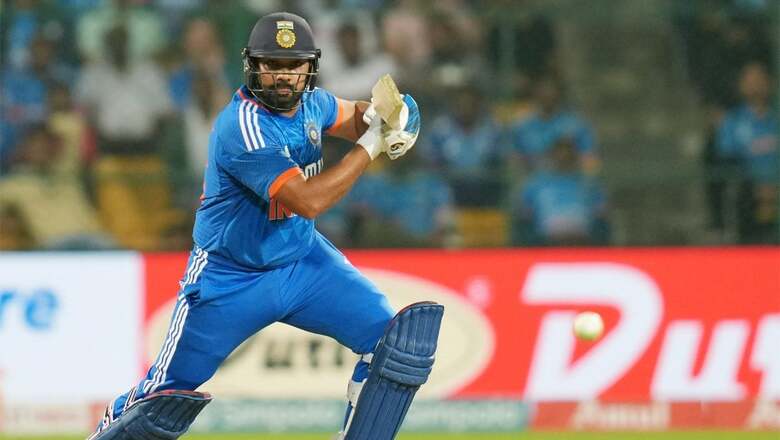
views
Drama, drama, and more drama. The final T20I between India and Afghanistan proved to be one for the ages as both teams left it all out on the crease as they delved into two Super Overs and finally, the Men in Blue rose above the Afghans.
It was a showcase of cricketing talent for the ages, but none shone brighter than the veteran Indian skipper Rohit Sharma, who unleashed nothing short of a blitzkrieg upon the Afghanistan ranks.
Rohit Sharma was coming into his final T20I before the 2024 T20I World Cup on the back of two back-to-back ducks, and after a nervy start, he overcame an Indian top-order collapse to notch up his hundred in a mere 64 deliveries and went on to finish with 121 not out with the help of 11 fours and 8 sixes.
But the moment the match truly took a dramatic turn was when the Indian skipper was allowed to bat in the second Super Over as well, following his decision to retire himself ‘out’ during the first.
With one ball remaining and two runs needed for India to clinch the win in the first Super Over and Yashasvi Jaiswal on strike, Rohit took the call to retire himself ‘out’ and bring in the speedster Rinku Singh as his substitute.
Azmatullah Omarzai gave away just one as Jaiswal found the toe end of his bat and the match was forced into a subsequent Super Over, the first time it has ever happened in T20Is.
But what followed was a startling sight for the Afghans, especially coach Jonathan Trott: Rohit Sharma padded up and took to the crease yet again to bat.
Be as it may, Rohit managed to score 11 in the second Super Over, which was the eventual target for the Afghans. And after scalping two wickets in three deliveries off Ravi Bishnoi, India managed to complete the whitewash.
Because therein lies the confusion: Was Rohit declared retired out / retired hurt? And in either case, should Rohit have been allowed to bat again?
To understand the situation better, let us take a gander what the MCC rulebook says about it all:
Rule 25.4.2 states, “If a batter retires because of illness, injury or any other unavoidable cause, that batter is entitled to resume his/her innings. If for any reason this does not happen, that batter is to be recorded as ‘Retired – not out’.”
Rule 25.4.3 states, “If a batter retires for any reason other than as in 25.4.2, the innings of that batter may be resumed only with the consent of the opposing captain. If for any reason his/her innings is not resumed, that batter is to be recorded as ‘Retired – out’.”
In case of a TIED SUPER OVER, the rules state, “Any batsman dismissed in any previous Super Over shall be ineligible to bat in any subsequent Super Over.”
So, what one can gather from it all is that if Rohit was retired ‘out’, he couldn’t have come out to bat for the second time. But, if there is any ambiguity in the game that lets us know that Rohit retired ‘hurt’ in the first super-over, then the skipper has played the rules perfectly.
Regardless of what the rules may state, the decision is bound to ruffle a few feathers and spark conversation in the cricketing community for time being. But, at the end of the day, India clinched the victory and they sure will take that to the bank any day.




















Comments
0 comment